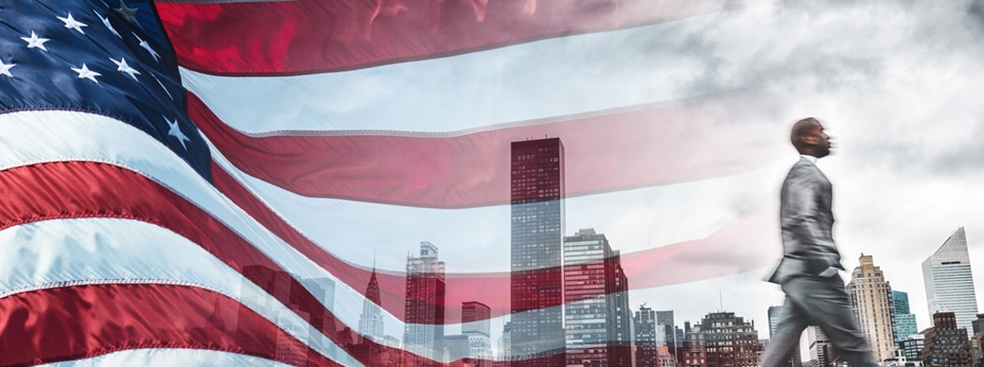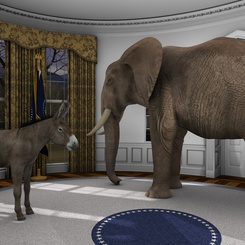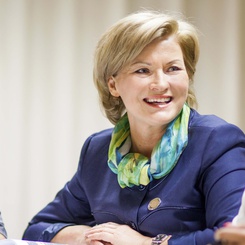As the world gears up to the forthcoming 3rd debate in the US Presidential election campaign, Estefania Santacreu-Vasut, Professor of Economics at ESSEC Business School and expert on gender equality in business and finance, looks into women in power and taps into the strategies used by US election candidates Hillary Clinton and Donald Trump to instill their identity among voters.
Women, Politics, and Power
Women were allowed to stand for election in the United States of America in 1788, and they were granted voting rights in 1920. A few decades later, in 1947, Hillary Rodham was born. Yet, while female formal access to US political institutions was granted relatively early on, compared to the rest of the world, it’s only now, in 2016, that a female candidate stands for election to become President of the United States of America.
The XXth and early XXIst centuries have witnessed an overall reduction in the gender gap in female labor force participation, together with a convergence of educational attainment levels and a reduction in pay gaps. For example, female labor force participation in the United States was below 20 % in the beginning of the XXth century up until the 1920s. It reached its maximum level in 2010, representing 46%, still below from the 70 % for the male participation rate, according to World Bank data.
Female presence in leadership positions has also increased, though more modestly. For example, in a recent working paper (ESSEC Working paper 1616) with my coauthors Davide Romelli (Trinity College, Dublin) and Patricia Charléty (ESSEC Business School) we document that female presence in Central Bank boards increased from 10 % in 2003 to 14% in 2014.[1] Importantly, we also show that the probability of appointing a female to the board is a function of the gender of the member being replaced. In particular, the predicted probability is 37 % when the departing member is female, while only 9 % when the departing member is male. A for the United States, female presence on boards represented 22 % in 2003 and reached 40 % in 2015. Furthermore, Janet Yellen was appointed as the first female governor of the FED in 2013 under the Obama administration. Overall, these numbers illustrate that while advancement has occurred, it has not been at the same speed throughout all sectors and institutions alike. The gap remains and female are still “outsiders" in political and leadership positions.
In 1979, the UN adopted the Convention on the Elimination of All Forms of Discrimination against Women (CEDAW). Since then, international and domestic organizations have put significant pressure to expand women’s political participation. Policy-makers and economists alike, such as the World Bank in 2001 and Ester Duflo, have indeed advocated for the use of formal measures such as political quotas for women. As Duflo (2011, p. 15) argues, ‘...in the absence of affirmative action of some sort, it would be very difficult for women to break into politics.’ Yet, these tools have not been applied equally throughout the world.
The Quota Question: top (role) models needed
In a recent article, together with Victor Gay (The University of Chicago) and Amir Shoham (Temple University) AEL (2013), we study which countries are more likely to adopt quotas for female presence in parliament. We show that in countries where cultural factors hold women back via language, legal quotas are used as a substitute for the evolution of cultural norms. To make sure that quota adoption was not merely `window dressing', we also investigate whether the legislation imposes sanctions. We also observe that in countries where quotas are adopted the increase after adoption is highest, especially in countries where gender inequality is highest.
While quotas may fast-track some of the advancements needed in decreasing barriers to access for women, some of these barriers are very persistent. Indeed, changes in female presence in the public sphere may be the result of changes in gender roles, including gender identity and expectations rooted in cultural norms. Part of the reason why these norms persist comes from the absence of role models. Indeed, research has shown that bringing a first generation of females to the political front has a positive impact on future generations. In that sense, Hillary Clinton may positively influence future generations and become a role model.
Much of Hillary Clinton’s campaign and discourse emphasizes her strong commitment to “families” and gender equality. Will her emphasis on gender appeal to the US electorate? In a world where political corruption has greatly deteriorated the image of career politicians, being an outsider can be a political advantage. Indeed, by emphasizing gender Hillary Clinton also tries to gather around her the vote of minorities, such as the LGBT community, among others. During the campaign, Donald Trump has accused Hillary Clinton of “playing the women card”.
Insider and Outsider appeal: Inside-out for the US elections?
While History makes of Hillary an outsider, her surname, Clinton, tells a completely different story! First Lady of the United States during Bill Clinton’s presidency, she has been in the public sphere and has served as US senator, and more recently secretary of state. Donald Trump has indeed constantly stressed her long career within the political establishment, to remind the electorate that she is actually an insider. And for many, Hillary Clinton is the Insider in this election, while Donald Trump, a business man, is the Outsider.
Much of the presidential debates on this election have indeed revolved, explicitly or implicitly on the candidates “inside-out” identity. For example, in the first presidential debate (September-2016) Donald Trump referred to his rival as “Secretary Clinton”, thereby emphasizing her insider position. In the second presidential debate, he accused Hillary Clinton of attacking the women who denounced her husband of sexual abuse. Inversely, Hillary Clinton calls the republican candidate Donald, which diverts emphasis on his outsider background as a businessman and emphasizes his insider identity as a man. Like in a poker game, both candidates have been battling over their “outsiderness”, with a particularly strong emphasis on gender related issues. The controversial and scandalous video of Trump degrading women have caused an even bigger number of republicans to withdraw their support to their candidate, who apologized for his words but claimed they were “just words”. But words and language are not neutral and are used, as we have seen, strategically by both camps.
Who among the outsiders, Hillary or Trump, will win? Will the insiders Clinton and Donald loose? Each of the candidates have indeed both insider and outsider identity dimensions. Regardless of the outcome, what this inside-out election reminds us of is that, as the Nobel Prize in Economics George Akerlof argues, “Politics is often a battle over identity”!
[1] Appointments to Central Bank Boards: Does Gender Matter? with Patricia Charlety and Davide Romelli ESSEC Working Paper 1616
Useful links:
Publications:- Foreign employees as channel for technology transfer: Evidence from MNC’s subsidiaries in Mexico
- Does mother tongue make for women's work? Linguistics, household labor, and gender identity
- Linguistic gender marking and its international business ramifications
- Do female/male distinctions in language matter? Evidence from gender political quotas
- Video: Gender Stereotypes (in French)









